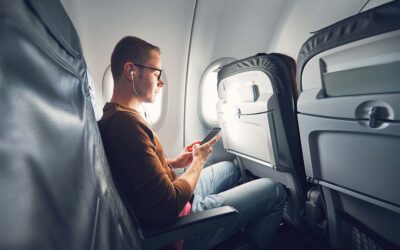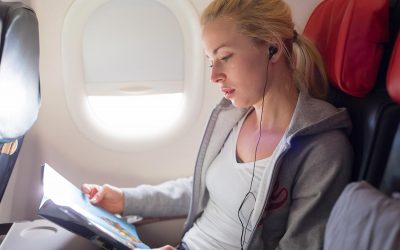Patient question:
“Dr Peter, I’m about to book flights but realised my varicose vein appointment is a few days before. How soon after I get my veins done can I fly?
Thanks,
Dianne”
It depends on three factors:
- The length of the flight
- How soon after treatment
- The type of vein procedure
Flights longer than 4 hours
We don’t recommend patients fly for at least 3 weeks if they have been treated with endovenous laser ablation (EVLA) or ultrasound guided sclerotherapy (UGS). The two major reasons are the increased risk of in-flight deep vein thrombosis (DVT, a leg blood clot) and recovery and follow-up, so patients can feel at ease flying.
- In patients who have had varicose veins treated, the risk of deep vein thrombosis increases when travelling on long-haul flights. This risk is further amplified if the patient smokes, takes the oral contraceptive pill or hormone replacement therapy, and in patients with overall poor health. (Note: DVT is a baseline risk to the general population on long-haul flights – over 4 hours – whether they have had varicose vein treatment or not. Read more about how DVT works here.)
- Importantly, patients receive an in-clinic review and ultrasound scan to check progress within 1-2 weeks after their varicose vein procedure. If there are any major concerns following their treatment, they are more likely to occur during this period. It is much easier to address these concerns before they get on a plane.
What if I must fly?
Although flying long distances for 3-4 weeks is best avoided, sometimes there is no choice. If it cannot be avoided, here are some preventative measures to follow.
Wear compression stockings or compression socks – wearing the compression stockings you are given after treatment on the long-haul flight helps support consistent blood flow, prevents blood settling in the lower legs because of gravity, and improves lymphatic drainage preventing swelling.
Keep moving – keeping the feet moving while sitting and walking around the plane contracts the calf muscle helping to move blood around the legs.
Hydrate well – drink plenty of water and avoid alcohol (which causes dehydration).
Blood thinners – patients at a particularly high risk of DVT may be prescribed blood thinners.
Most importantly, get in contact with your treating phlebologist to discuss air travel during this time, so you can both be well informed and prepared.
Flights shorter than 4 hours
In most cases, patients can fly for less than 4 hours within 1-2 weeks after their treatment. However, it’s a good idea to follow the long-haul guidelines above anyway, as a precaution.
Also keep in mind all the normal post-treatment instructions still need to be carried out, even if you’re out of your normal circumstances. For example, after EVLA compression support stockings should be worn during the day for 14 days and patients should walk for 30 minutes a day, this is still necessary for ensuring successful treatment. Your follow-up appointment and scan should also be prioritised.
Key Takeaways
- What we recommend about taking flights after varicose vein procedure depends on the length of the flight.
- Over 4 hours – avoid for at least 3 weeks.
- Under 4 hours – You can fly, but take precautions, speak to your phlebologist, and don’t overlook normal aftercare for the procedure.
- If you simply must fly – consult your phlebologist and take extra precautions.






